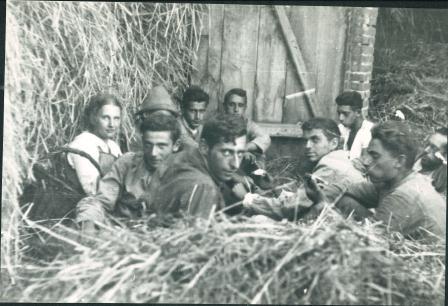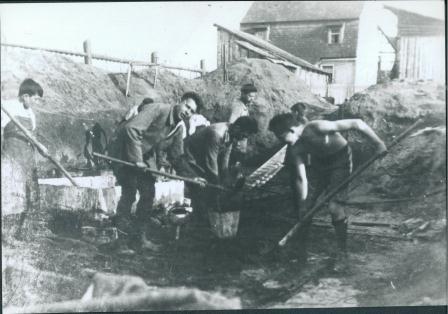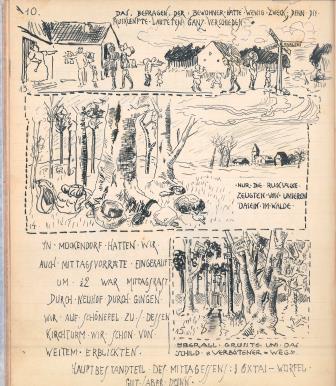“Blau Weiss” was a German-Jewish youth movement, one of the first youth movements of the 20th century. Its beginning can be traced to the national-German youth movement, the “Wander Vogel”, (the wandering birds), that raised the flag of the love of nature and of the motherland, and instilled these values through long hiking trips across Germany. In the first decade of the 20th century, the Wander Vogel took on nationalistic tendencies, and acquired anti-semitic characteristics. Jews that tried to join the movement were turned away. As a response, Joseph Markus of Breslau and Walter Moses of Berlin decided, in 1912, to found a similar, Jewish movement – the Blau- Weiss movement. The first branches were founded in cities across Germany, and later also in Austria, Czechoslovakia and Hungary. Towards the end of the First World War, the movement comprised about 3000 members.


 Germans, Jews, and everything in between
Germans, Jews, and everything in betweenBlau Weiss, from its very beginning, expressed the major issues and concerns with which the changing European–Jewish society had to deal. The question of the correlation between the Jewish and German elements of identity was the main one. An example of this can be seen in one of the Blau Weiss pamphlets of the Nuremberg branch, in an article in the format of a dialogue between a member of the movement and one of its representatives, discussing the Jews' ability to integrate into German society: "What is the meaning of assimilation?" asks the movement's representative. "It is to become the same as something else. In the human context, even mixed marriages won't make that happen". "I see what you mean", answers his young companion. "Even if the Jews strive to be a part of society, anti- Semitism will always keep them out." The purpose of the movement, then, was not to enable its members to integrate into German society, but to develop their Jewish identity, which they perceived as an alternative to the German one. The next obvious step was the adoption of the Zionist ideology. In 1922 Blau Weiss bgan training its members in agriculture, as a first step towards coming to Palestine.
The question of the integration of women was another main issue. In its first days, Blau Weiss was a mixed movement. The addition of more branches and the joining of members from smaller cities raised the demand to separate the genders – in the movement's activities, as in the prescribed roles. This is why in 1922, a separate, girls-only movement was established, headed by Hedwig Grossman (one of the future founders of the Ein Harod village). In 1925 the movement published a book, "Al Hamishmar", where it seemed to complete the evolvement towards a patriarchal world view: the role of leading society was given to the boys and men, while the roles assigned to women were within the home and family. This approach was not accepted by everyone: in 1921; Frieda Bambus, a member of the movement, founded an agricultural school for girls in Opladen, Germany. The school was active until 1924.
Bearers of the Pin
As in the Wandervogel, a main characteristic of the movement was the return to nature, and the conducting of long hiking trips. Every member had to complete a quota of hiking hours, and was given a pin upon completion, that signified him as a full member. The document before you is a part of a travel diary of one of the members, Sydny Hesskel, artistically describing such a trip in 1915. Hesskel took his own life five years later. The diary is part of the Blau Weiss archive that is kept in the CZA.

